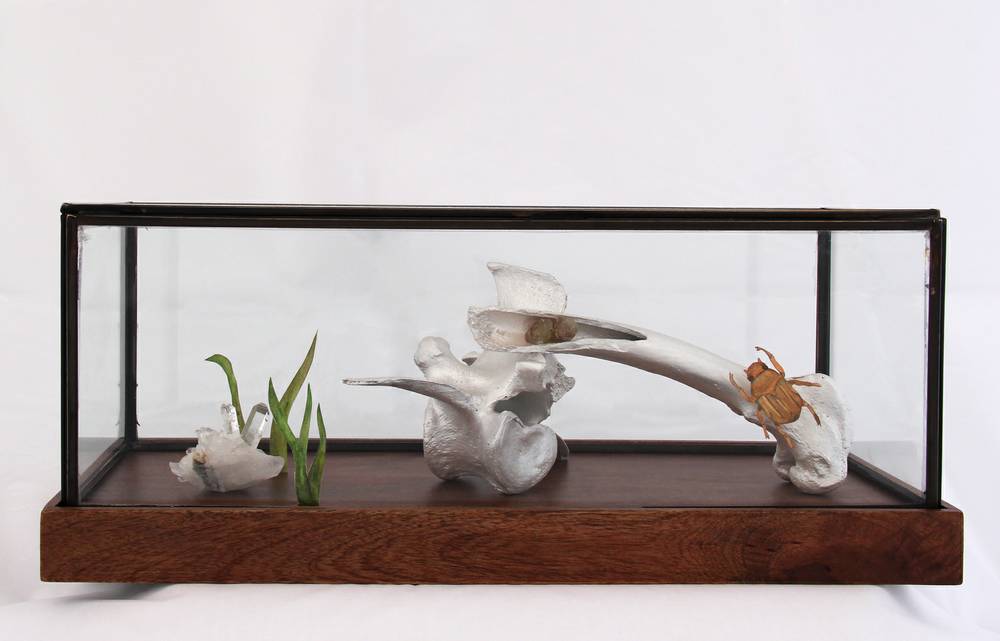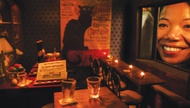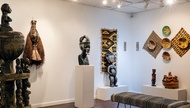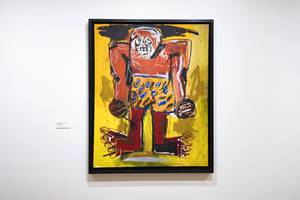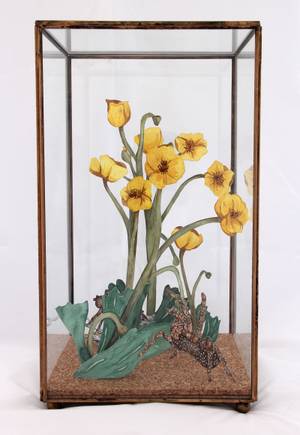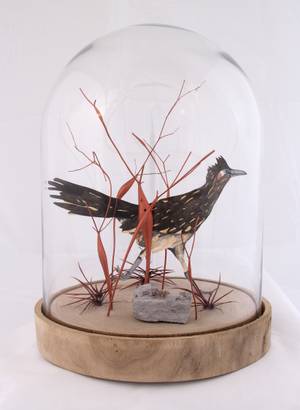
High Noon Through July 8; Monday-Friday, 8 a.m.-5 p.m.; free. Clark County Government Center Rotunda Gallery, 702-455-7030.
It’s tough out there. You can’t distinguish real from fake, true from false, authentic from artificial—even when it comes to wildlife. Myranda Bair knows this. An artist trained in science, an avid rock climber and dedicated environmentalist, Bair has turned the Rotunda Gallery into a science fair. Part cabinet of curiosities, part sculpture exhibit, part craft display, High Noon serves as both warning of environmental collapse and welcome spotlight on the weird, non-conforming beauty of the desert landscape in which we live.
For High Noon, Bair arrayed 12 pedestals—one for each number on a clock—in a circle around a central cluster of beehives (after the show, the empty hives will be offered to local beekeepers). Each pedestal presents a specimen of Mojave flora and fauna enclosed in a glass globe or case. You have to lean in, look closely, the way you would in a museum of natural history. And this is where Bair’s sleight of hand takes place. It’s not a “real” roadrunner you’re looking at. It’s not even a fake roadrunner. It’s a painting that looks exactly like a roadrunner, but is, in fact, watercolor on Fabriano paper—hyper-real and simulated at the same time.
In works like “Horned Lizard on Cholla with Ants” and “Spring Fever (Tarantula on glass),” Bair’s skill as a scientific illustrator comes to the fore. She is a gifted draftsman. Her exactitude is in evidence everywhere, from the faithful representation of red speckled toads or yerba mansa flowers to the precision cutouts to the assembly of her subjects in habitat dioramas. Found cacti skeletons, quail eggs, bones, stones and dried vegetal matter mingle with the paintings in evocative scenes. The painted sculptures hover on the threshold between realism and surrealism in an interesting way. Bair’s stuffed-felt sculptures of cacti—Hedgehog, Beavertail and Yucca—while fetching, have fainter resonance. The bees dotting the pedestals provide a unifying motif, but perhaps seem slightly forced.
At its best, High Noon delivers commentary on endangered habitats, their critters and plant life. Some of the works, when viewed from behind, are blank—the Gila may be painted in painstaking detail on the front, but the back of the paper is empty, bereft of life. That “high noon” emptiness is foreboding. It’s as if the artworks, along with habitats, are disappearing right before your eyes.
